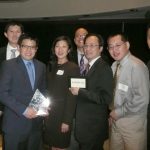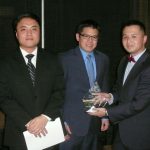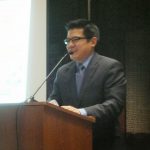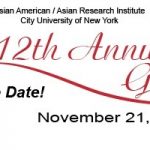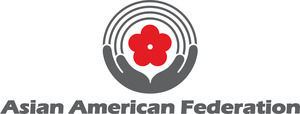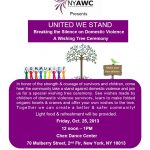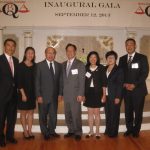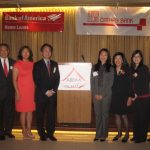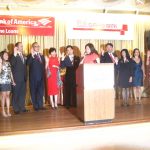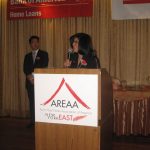AAARI: Microaggressions and the LGBT Community
This talk is free and open to the general public.
Dr. Kevin Nadal will discuss his new book, That’s So Gay!: Microagressions and the Lesbian, Gay, Bisexual, and Transgender Community. People who identify as lesbian, gay, bisexual, or transgender (LGBT) experience subtle forms of discrimination, also known as microaggressions. Microaggressions are commonplace interactions that occur in a wide variety of social settings, including school or the workplace, among friends and family, and even among other LGBT people. These accumulated experiences are associated with feelings of victimization, suicidal thinking, and higher rates of substance abuse, depression, and other health problems among members of the LGBT community.
In his book, Dr. Nadal provides a thought-provoking review of the literature on discrimination and microaggressions toward LGBT people. Dr. Nadal’s books also includes advice for mental health practitioners, organizational leaders, educators, and students who want to adopt LGBT-accepting worldviews and practices.
Kevin Nadal is an award-winning professor, psychologist, performer, activist, and author, who received his doctorate in counseling psychology from Columbia University in New York City. Currently, Dr. Nadal is an Associate Professor of psychology at John Jay College of Criminal Justice- City University of New York, where he is also the deputy director of the Forensic Mental Health Counseling Program. He is the author of the books Filipino American Psychology: A Handbook of Theory, Research, and Clinical Practice (2011, John Wiley and Sons) and Filipino American Psychology: A Collection of Personal Narratives (2010, Author House), a co-editor of Women and Mental Disorders (2011, Praeger), and the author of That’s So Gay: Microaggressions and the Lesbian, Gay, Bisexual, and Transgender Community (2013, APA Books).
To RSVP for this talk, please visit www.aaari.info/13-11-08Nadal.htm. Please be prepared to present proper ID when entering the building lobby. For those unable to attend, you can view the live webcast on our homepage beginning at 6:15PM EST, or access the streaming video and audio podcast the following week.
AAF: New York State Senate and Assembly Districts Highlight the Growth and Diversity of Asian New Yorkers
(212) 344-5878, x217
New York State Senate and Assembly Districts Highlight
the Growth and Diversity of Asian New Yorkers
According to Asian Americans of the Empire State: Growing Diversity and Common Needs, published by the Asian American Federation earlier this year, New York State is home to the second largest population of Asian Americans. “While the fastest population growth and the newest communities are in the upstate region, most Asian American New Yorkers live in the New York City metro area,” said Howard Shih, Census Programs Director at the Federation. “The Asian American community is culturally and economically diverse.
Some of the key highlights from the briefing papers are:
- For the first time, one State Senate district is majority Asian.
- Three Assembly Districts are now majority Asian, up from only one in 2002.
- Chinese is the most spoken language other than English in 5 Assembly Districts and 3 Senate Districts. Korean is the most spoken language other than English in one Assembly District (District 26).
- The second most commonly spoken Asian language group consists of the languages of the fast-growing South Asian population.
According to the Assembly district briefing paper, District 40 in Flushing has the largest Asian population, followed by District 25 in Northeast Queens. In District 40, 64% of the population is Asian. “This briefing paper is a tool for elected leaders because it is so important to know what ethnic groups we are serving in our different Assembly districts, and base our services and communications on the needs of different groups. As the only Asian American elected to a state office and the prime sponsor of Data Disaggregation bill, data breakdowns like this enable the state leaders to provide better access to the services that our constituents deserve. I will personally be promoting this tool and sharing it with my colleagues in the New York State Assembly so that we can continue to have stronger connections with our state’s growing Asian American community,” said Assemblymember Ron Kim (D. 40).
“By providing information on the diverse and growing communities across the city and in individual districts, we move one step closer to making state government accessible to everyone it serves. I look forward to working with all the great groups serving the Asian American community to ensure even greater language access to public information,” said Assemblymember Nily Rozic, who represents District 25 which has over 67,000 Asians, or 54% of total population.
On the State Senate side, the district with the largest Asian population is District 16 in Flushing Queens, represented by Senator Toby Ann Stavisky. District 16 has over 176,000 Asians, making the district 55% Asian. “This paper by the Federation highlights one of the most fascinating parts of my district—our incredible culture of diversity and inclusion. I am glad that New Yorkers of all backgrounds, from the Chinese population in Flushing to the South Asian population in Jackson Heights and the Korean population in Murray Hill have decided to call Queens home. I remain committed to ensuring that my constituents have in-language assistance to services, civic participation access, and other opportunities to have a stronger voice in their community. This insightful research helps me better understand and better serve all of the people of the 16th district,” said Senator Stavisky.
District 11 had the second largest Asian population, with over 1 in 3 residents who are Asian. The third largest Asian population is District 26, which encompasses Lower Manhattan’s Chinatown. 24% of the population in District 26 is Asian. Upon review of the briefing paper, Senator Daniel Squadron remarked, “As New York’s Asian American population continues to grow, it’s critical that the community has real partners and a real voice in government. This report only underscores how important that partnership is, on everything from language access in education and government to protecting small businesses.”
“In a few months, the 2014 election cycle for state offices will begin. We hope these briefing papers are tools for elected leaders to reach out and engage the Asian Americans living in their districts. Oftentimes, outreach to our community is overlooked, but having tools like these that show the breakdowns of the top languages in New York City’s state assembly and senate districts, as well as the disaggregation by the top 19 Asian languages spoken in each district, will better equip our leaders to engage residents. In turn, these papers will facilitate community leaders and advocates to show that our civic voice is growing and that we need to better connect with our elected officials to offer our expertise, ask for help and support,” said Cao K. O, executive director of the Federation.
http://www.aafederation.org/cic/briefs/NYCAssembly2012.pdf
###
INDIRA TALWANI NOMINATED TO SERVE AS DISTRICT COURT JUDGE
National Asian Pacific American Bar Association
1612 K Street NW, Suite 1400
Washington, DC 20006
FOR IMMEDIATE RELEASE
September 24, 2013
Contact: Emily Chatterjee
(202) 775-9555
INDIRA TALWANI NOMINATED TO SERVE AS DISTRICT COURT JUDGE
WASHINGTON – Today, President Barack Obama nominated Ms. Indira Talwani to a seat on the United States District Court for the District of Massachusetts. If confirmed, Talwani will be the first person of Asian descent to serve as a federal judge in the Commonwealth of Massachusetts, the first person of Asian descent to serve as an Article III judge in the First Circuit, and only the second female Article III judge of South Asian descent nationwide.
“We applaud Indira Talwani’s historic nomination to the federal bench,” said Wendy C. Shiba, president of the National Asian Pacific American Bar Association (NAPABA). “Ms. Talwani has the right experience, intellect, integrity, and temperament to serve with distinction on the federal judiciary in Massachusetts. We hope that the Senate votes to confirm her swiftly.”
Since 2003, Talwani has served as a partner with the Massachusetts law firm of Segal Roitman. Previously, Talwani was a partner with the San Francisco law firm of Altshuler Berzon LLP. After graduating from Harvard/Radcliffe College and University of California Berkeley School of Law, she began her legal career by serving as a law clerk for the Honorable Stanley A. Weigel on the U.S. District Court for the Northern District of California. Talwani has received numerous awards for her professional accomplishments, including: Best Lawyers in America (2013); Massachusetts Super Lawyers (2012); Top 10 Lawyers of the Year, Massachusetts Lawyers Weekly (2010); and Chinese Progressive Association’s Workers Justice Award (2012).
NAPABA commends President Obama for nominating Indira Talwani to the bench and Senator Elizabeth Warren of Massachusetts for her support of the nomination. Talwani along with fellow Asian Pacific American nominees Vince Chhabria and Manish Shah await Senate confirmation votes. If all three are confirmed to the bench, President Obama will have tripled the number of Asian Pacific American Article III judges on the federal judiciary from eight to twenty-four.
###
The National Asian Pacific American Bar Association (NAPABA) is the national association of Asian Pacific American attorneys, judges, law professors, and law students. NAPABA represents the interests of over 40,000 attorneys and 66 state and local Asian Pacific American bar associations. Its members include solo practitioners, large firm lawyers, corporate counsel, legal service and non-profit attorneys, and lawyers serving at all levels of government. NAPABA continues to be a leader in addressing civil rights issues confronting Asian Pacific American communities. Through its national network of committees and affiliates, NAPABA provides a strong voice for increased diversity of the federal and state judiciaries, advocates for equal opportunity in the workplace, works to eliminate hate crimes and anti-immigrant sentiment, and promotes the professional development of people of color in the legal profession.
From NAPABA: NATIONAL ASIAN PACIFIC AMERICAN PRE-LAW CONFERENCE — NOV. 9
NAPABA encourages prospective law students to register for the National Asian Pacific American Pre-Law Conference hosted by NAPABA. The Conference will be held on Saturday, November 9, during the Annual Convention and is open to all prospective law students regardless of age, race, background, goals, and experience. The Conference welcomes Annual Convention attendees’ family members, and any other prospective law students who may have an interest in learning more about law school and a JD degree. There is no cost to attend but registration is required. Interested prospective students can learn more on the Convention website and register by clicking here. Limited travel stipends are available to participants traveling from outside the area. Apply for a stipend before October 11 by clicking here.



